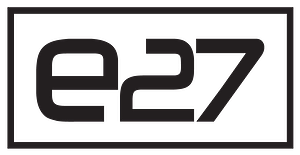The Layoff You Didn’t See Coming - Because AI Made It Invisible
AI is enabling a new kind of workforce reduction where jobs vanish quietly through automation and attrition, reshaping organizations without the public signals of traditional layoffs.
The New Era of Invisible Workforce Reduction
For decades, layoffs were unmistakable events. They came with company-wide announcements, HR meetings, security escorts, and sometimes, media headlines. The process was public, disruptive, and often damaging to morale and reputation.
But as AI rapidly integrates into the enterprise, a new phenomenon is emerging — the invisible layoff. Instead of mass terminations, AI quietly absorbs tasks, roles dissolve without fanfare, and headcount shrinks without any formal acknowledgment. For many organizations, this approach is strategic. For employees, it is almost impossible to see coming.
The quiet nature of this shift makes it all the more disruptive. Roles disappear not with a bang, but with a silent algorithmic takeover.
What Are “Invisible Layoffs”?
Invisible layoffs occur when positions are eliminated gradually, often without explicit communication, as AI and automation replace the need for certain human tasks.
In contrast to traditional layoffs, where announcements are made and severance packages are distributed, invisible layoffs are subtle. An employee resigns, and their role simply isn’t backfilled. A team is restructured, and certain responsibilities are absorbed by AI tools. Eventually, the headcount drops, but there is no official record of a layoff ever happening.
For the individual employee, the signs are easy to miss. But collectively, they represent a structural workforce shift.
The AI-Driven Layoff Playbook
Quiet Role Redundancy
The most common invisible layoff method is attrition without replacement. AI systems are deployed to handle routine tasks, allowing companies to maintain productivity even as people leave. Over time, the number of employees decreases without any formal termination process.
Task Displacement vs. Job Displacement
AI rarely removes a job all at once. Instead, it dismantles it piece-by-piece. A marketing analyst may first see their reporting tasks automated. Then, predictive insights come from AI dashboards. Soon, their strategic input is minimal, and the position no longer justifies a full-time employee.
Department Shrinkage Without Announcements
Entire departments can contract invisibly. Customer service teams may see volumes handled by AI chatbots. Finance teams may rely on AI-driven reconciliation. Legal departments may integrate AI-based contract review. Each reduction is incremental — rarely significant enough to warrant a press release.
Why Enterprises Are Choosing the Invisible Approach
From a leadership perspective, invisible layoffs can be appealing.
-
Reduced morale damage – Public layoffs create anxiety across the workforce. Gradual attrition keeps morale stable, or at least less visibly shaken.
-
Lower severance costs – Avoiding large-scale terminations saves on compensation packages.
-
Smoother AI integration – Implementing automation without a human backlash makes AI adoption politically easier.
-
Positive investor optics – Instead of announcing job cuts, executives can frame the transition as “operational efficiency gains” or “digital transformation.”
The result is a more controlled narrative and a quieter shift to AI-driven operations.
Case Studies and Early Evidence
Big Tech’s AI Transition Quietly Reshaping Roles
Large technology companies have begun reducing certain operational roles by integrating AI into their workflows. Customer support, finance, and even software testing have been quietly restructured. While no official “layoff” headlines surface, internal headcount data tells a different story.
Mid-Size Enterprises Following Suit
Smaller organizations are adopting similar strategies. A mid-sized financial services firm implemented an AI document processing system. Over 18 months, the accounts payable team went from 12 people to 4 — without a single public layoff.
The Ethical and Cultural Fallout
The invisible layoff strategy is not without risks. When employees discover that AI replaced colleagues without transparency, trust can erode quickly. Workers may feel misled, even if the company technically avoided direct terminations.
Beyond trust, there is the question of dignity. Traditional layoffs, while painful, acknowledge the human cost of restructuring. Invisible layoffs sidestep the conversation entirely, creating a perception that people are just quietly phased out in favor of machines.
For leaders, this approach can backfire if the workforce begins to view AI not as a productivity tool, but as a silent threat.
Protecting Yourself in the Age of Invisible Layoffs
Skills That AI Can’t Replace (Yet)
Certain capabilities remain resilient to automation: strategic decision-making, nuanced negotiation, complex relationship-building, and cross-functional leadership.
Building AI-Complementary Expertise
Instead of competing with AI, professionals can focus on complementing it. This means becoming the person who supervises, validates, and directs AI output — not just the person executing tasks it can automate.
Career Vigilance
Invisible layoffs leave few public signals, but individuals can watch for patterns: delayed backfills, major technology upgrades, shifts in team KPIs, or sudden changes in role definitions.
What Leaders Should Do Differently
Leaders navigating AI-driven change face a choice: efficiency at any cost, or efficiency with integrity.
Transparent communication, even about incremental changes, can preserve trust. Offering re-skilling programs can reposition employees for new AI-adjacent roles rather than letting them disappear through attrition. A well-managed transition acknowledges both the economic benefits of AI and the human responsibility of leadership.
Conclusion – When “No Layoffs” Doesn’t Mean “No Job Loss”
Invisible layoffs represent a fundamental shift in workforce management. They allow companies to reduce costs, integrate AI, and avoid the fallout of public layoffs. But the absence of headlines does not mean the absence of impact.
The quiet, incremental nature of AI-driven job erosion makes it harder to anticipate — and harder to recover from. Both leaders and employees must recognize that in the age of AI, job loss may be silent, but it is no less real.



